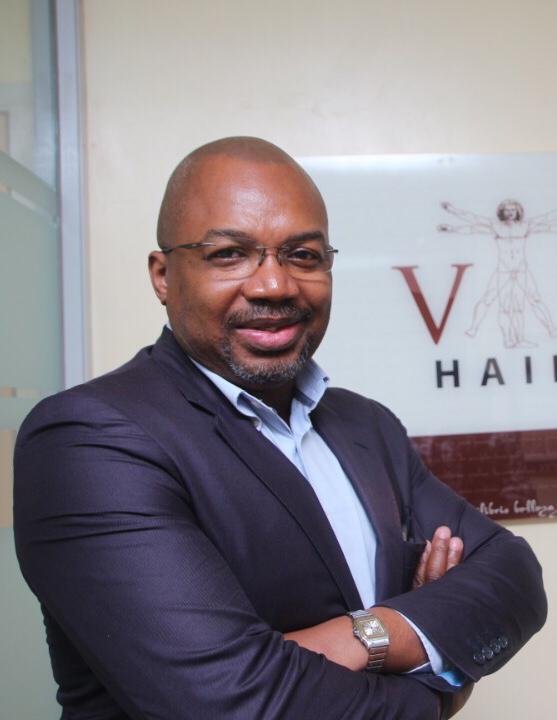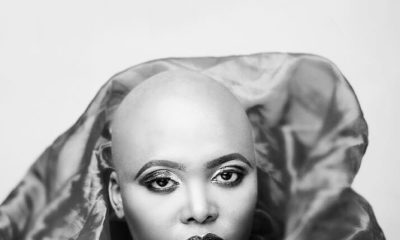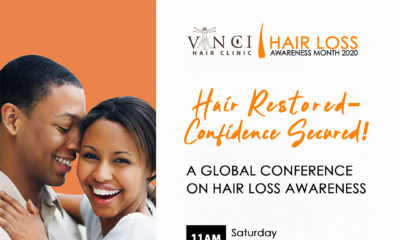Beauty
Ayo Otubanjo: Here are Ways to Treat Frontal Hair Loss
 Trust me, nobody ever wants to be caught with ‘chop chop hair’. However, some things are quite unavoidable. So let’s talk about frontal hair loss, its causes and treatment options.
Trust me, nobody ever wants to be caught with ‘chop chop hair’. However, some things are quite unavoidable. So let’s talk about frontal hair loss, its causes and treatment options.
Frontal hair loss can be quite embarrassing, thereby making most people hide behind scarves, caps or wigs. This annoying pattern of hair loss affects the appearance of an individual and in some cases, makes people look less attractive.
Few causes of hair loss that affects the hairline area in both men and women:
- The male hormone testosterone is converted by an enzyme to dihydrotestosterone (DHT) and this has been shown by medical research to be the leading cause of androgenetic alopecia. This form of hair loss affects both men and women, but it is more commonly seen as baldness in men than in women. DHT reduces the size of the hair follicles over a period (thinning hairs) to the point where those follicles eventually cease to exist (baldness).
- Traction Alopecia is quite common with African women. This is the result of certain hair stylings, such as tight braids, or the fixing of wig caps using glues that can be quite damaging to the hair follicles. Most women find the popular ponytail hairstyle to be sexy – it makes you look like the famous singer, Ariana Grande. However, once the hair is forced into a knot, the tightness can pull out your hair – especially when it’s done often.
Available Treatment For Frontal Hair Loss:
Hair transplant surgeons, hair loss consultants, and dermatologists are specialists in hair treatment. They have devised a means of treating and restoring hair loss. You will be pleased to know that medications, as well as surgical measures, can help treat and restore frontal hair loss.
Medications approved for hair loss regrowth:
- Minoxidil (Rogaine): This is a topical medication in the form of lotion or foam that needs to be rubbed on the affected region of the scalp every day. This rub-on treatment is best to restore blood flow to the scalp and helps restore thinning hair loss. Contrary to some people’s expectations, it does not restore hair to a bald scalp but only helps to restore thinning hair. Its efficacy is improved further if used in conjunction with other medication or treatment options in dealing with androgenetic alopecia. The drug is available over the counter at a pharmacy or drugstore.
- Finasteride (Propecia): This medication is used to treat male pattern baldness (androgenetic alopecia). The medication works by blocking the effect of DHT.
- Saw Palmetto: As a result of the possible harmful hormonal effects on women, Finasteride is NOT prescribed for women. As an alternative, Saw Palmetto – which is an herbal form of Propecia – is generally prescribed for women experiencing the genetic form of hair loss.
Where baldness or total loss of hair has set in, the only possible form of hair restoration is the surgical implant of new hair follicles. Hair transplant procedures are minor surgical operations done to replace hair follicles. There are two principal forms of hair transplant procedure:
- Follicular unit transplantation or Strip method (FUT): A slither of skin tissue is surgically removed from the back of the head which has not been affected by balding or thinning. This type of transplant is great for covering large bald areas in a fast and effective way and considered to be the most appropriate for African hair.
- Follicular unit extraction (FUE): This type of transplant extracts individual hairs from the donor area to be carefully placed and planted into the recipient area. It is the less invasive of the two types.
Other treatment options for thinning hair are:
- Laser cap treatment: Low-level laser therapy is also referred to as red light therapy. The theory of laser treatment is that the low-dose laser treatments stimulate blood circulation that encourages hair follicles to grow hair.
- Platelet Rich Plasma solution (PRP): Through a process of spinning the blood in a centrifuge, the plasma – which is a by-product of the blood – is retrieved and injected back into the scalp. This procedure stimulates dormant hair follicles into the growth phase and promotes improved blood flow to the area treated.
- Micro Scalp Pigmentation (MSP): This is a non-surgical cosmetic hair restoration solution giving the appearance of a shaved look. It is a very popular procedure for men who have gone extensively bald, or do not want to undergo the surgical hair transplant and prefer the shaved look giving them a distinct hairline and filling the rest of the scalp with pigments to resemble hair.
- Alomesa Mesotherapy: This is a procedure where minoxidil and certain vitamins and nutrients are injected directly into the scalp. It increases the thickness and condition of thin/dull hair.
Remember that for every hair problem you have, there is always a solution.























